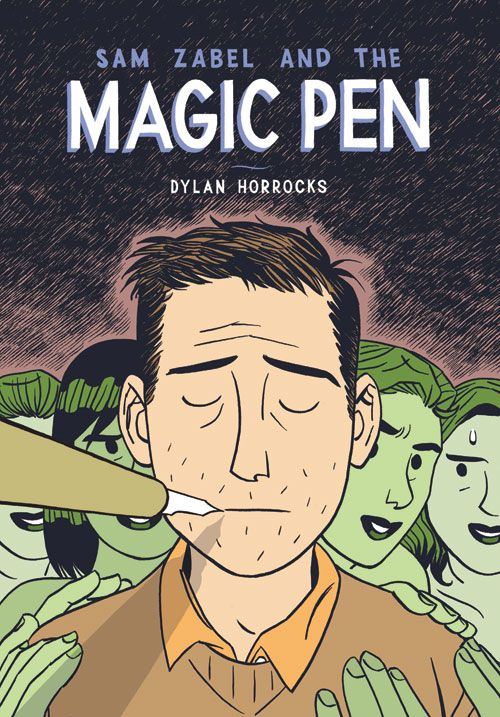When Dylan Horrocks' "Hicksville" was released in 1998, it was the sort of debut that had fans breathlessly awaiting the follow-up. The wait is now over, with one of his serials from "Atlas" -- "Sam Zabel and the Magic Pen" -- complete and clocking in at 216 pages of excitement and wonder. Within its pages, Horrocks weaves a story about giving up one's inspiration for a steady paycheck and rediscovering the wonder of what one truly loves. With the recession starting to fade and the economy recovering, "Sam Zabel and the Magic Pen's" release couldn't have been more perfectly timed.
Horrocks' story opens in a quasi-autobiographical manner as we follow Zabel, a comics creator who's been writing the adventures of "Lady Night" for a large publisher that owns the character. While the pay is good enough, it's sapping Zabel's creativity, keeping him from working on comics to which he feels a personal attachment. It's hard to not see parallels between Zabel and Horrocks, with Zabel at times being a direct stand-in for Horrocks (even mentioning issues of the comic "Pickle," in which Horrocks' comic "Hicksville" was serialized). This may sound like you're about to embark on 200+ pages of navel-gazing, a general "woe is me" mood hanging over every image. That's why I'm letting you know that, before the book's even a quarter complete, Zabel is standing on Mars, accompanied by a brilliant Japanese schoolgirl named Miki who wields a blast gun and rocket boots.
"Sam Zabel and the Magic Pen" may have a lack of inspiration and writer's block lurking at its core, but it ultimately contains so much more than that. It's simultaneously a fictional review of comic book history, a series of rollicking adventures through several of comics' different genres and a rallying cry to follow your passions. There's even a thread of metafiction where comic creators find themselves face-to-face with their own characters.
Horrocks' art is an integral part of "Sam Zabel and the Magic Pen," bringing to life all of the different comic book realms through which Zabel and company journey. His style, with its slightly simple and stripped down features, is now perfectly on target with current trends in comics as they continue to lean towards a clean look. He's great with the overall language of comics, too; for example, when there's a cliffhanger/transition in one of the chapters where a character makes a big decision, Horrocks carefully leaves off the final panel of the page, just using white space to give the reader an unconscious directive to pause before continuing on. It's a subtle but effective usage of the comics medium, and something that Horrocks clearly understands.
Horrock's coloring within "Sam Zabel and the Magic Pen" is just as striking. "Hicksville" was in black and white, so seeing such care placed into the coloring is a pleasant surprise. This is more than just making sure that all of the Venusians are slightly different shades of green, mind you. It's the beautifully washed out colors for flashbacks, for example, taking an almost duo-tone approach to each page with a background like yellowed newsprint. There's a vibrancy to the book overall, and those colors are a large part of the overall success.
Those who have followed Horrocks' website got a sneak preview of "Sam Zabel and the Magic Pen," but now everyone else can be in on the secret: this book is fantastic. It's wonderful to see Horrocks' second graphic novel build on the strength of the first and remind everyone that he isn't a one-hit wonder. If there's one thing that's clear about the overall message of this comic, it's that -- with any luck -- we won't have to wait quite so long for a third book from Horrocks. I suspect that, if you read this book, you might find something similar buried within you coming to the forefront. Highly recommended.

